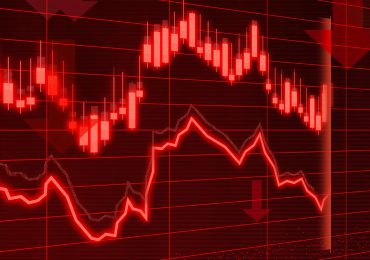The Wall Street Journal’s Jason Zweig is taking Jeremy Siegel to task for the data Siegel uses in his Stocks for the Long Run, an often quoted resource for buy-and-hold investors.
Siegel’s book tracks stock returns back more than 200 years, to 1802, and shows how stocks have shown a remarkable tendency to revert back to real (after-inflation) returns of 7% annually throughout those two-plus centuries. But, writes Zweig, “There is just one problem with tracing stock performance all the way back to 1802: It isn’t really valid.”
According to Zweig, the early portion of the data Siegel uses (based on data first gathered several decades ago by economists Walter Buckingham Smith and Arthur Harrison Cole) is an inaccurate representation of the stock market that existed in early 19th century America. “For the years 1802 through 1820,” he says, “Profs. Smith and Cole collected prices on three dozen banking, insurance, transportation and other stocks — but ended up including only seven, all banks, in their stock-market index. Through 1845, they tracked 19 insurance stocks, but rejected 95% of them, adding only one to their index. For 1834 onward, they added a maximum of 27 railroad stocks.”
“They cherry-picked their indexes by throwing out any stock that didn’t survive for the whole period, whose share prices were too hard to find or whose returns seemed ‘inflexible,’ ‘erratic,’ or ‘non-typical,'” Zweig adds. One database has identified more than 1,000 stocks and 10 exchanges that existed between 1790 and 1860, he says, meaning that “the indexes relied on by Prof. Siegel exclude 97% of all the stocks that existed in the earliest years of the U.S. market, and include only the bluest of the blue-chip survivors.”
Zweig also says that Siegel has been inconsistent in his estimate of dividend yield in those early years, first putting it at 5% and then raising it to 6.4%. That difference increased the returns for the entire two-plus century period by about half a percentage point, Zweig says, noting that another noted investor, Robert Arnott, has estimated that early dividend yield to be 5.2%.
“I made an estimate of the dividend yield,” Siegel told Zweig, “through looking at a smaller set of securities and projecting it out. … Arnott has a much lower estimate, and that’s a big difference. I mean, I don’t know what more to say.”
Zweig’s take on all of this? “The 1802-to-1870 stock indexes are rotten with methodological flaws. So we have only the period since then, or four distinct and complete 30-year stretches of stock returns, to base our long-term investment decisions on. Another emperor of the late bull market, it seems, has turned out to have no clothes.”








